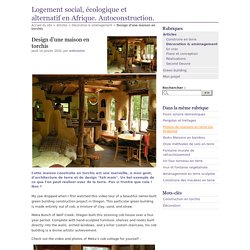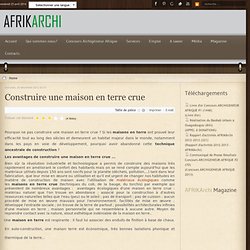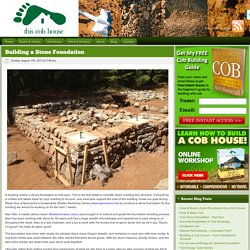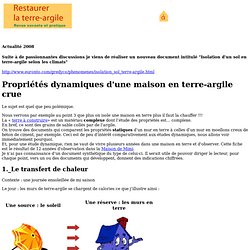

CONSTRUCTIONS... POELE DE MASSE ROCKET au GUATEMALARocket Mass Heater in GuatemalaCalentador Rocky Voilà comment on peut conjuguer TECHNOLOGIE, BEAUTE et EFFICACITE!

Un poêle de mass rocket inspiré par Ianto Evans et son livre "Rocket Mass Heater , a super efficient wood stove you can build"Un pôele de masse multifonction (poêle, lit et cuisinière) construit dans l'Altiplano pour notre amie Norma au Guatemala. Esta estructura es una combinacion de calentador, mueble (una cama) y una estufa!! Hecho para nuestra querida amiga Norma por San marcos (departamento), Guatemala Este trabajo nos llevo a mi y a Joaquin una semana. Nuestro amigo Gerber nos estuvo tambien ayudando unas cuantas tardes. GRACIAS IANTO !!! YOURTE EN BOTTES DE PAILLE EN ALSACEStraw bale yurt in FranceYurt en balas de paja en Francia Chantier participatif de 3 semaines chez Anne et Dim en Alsace.
Amazing 3 weeks workshop at Anne & Dim's in France! Nuestro querido Harry, canastero profesional, queria un espacio para hacer yoga. Design d’une maison en torchis, Décoration & aménagement. My jaw dropped when I first watched this video tour of a beautiful owner-built green building construction project in Oregon.

This particular green building is made entirely out of cob, a mixture of clay, sand, and straw. Meka Bunch of Wolf Creek, Oregon built this stunning cob house over a four year period. Complete with hand-sculpted furniture, shelves and nooks built directly into the walls, arched windows, and a killer custom staircase, his cob building is a divine artistic achievement. Check out the video and photos of Meka’s cob cottage for yourself : This couch is made of cob and features wood storage tucked underneath, right next to the stove. The kitchen features many shelves and nooks built directly into the cob walls, and also includes a small compost chute. The wood stove is surrounded by cob for thermal mass, and includes a warm nook with shelf to culture yogurt. Gorgeous custom-made cob staircase. The north porch of Meka’s cob cottage. Construire une maison en terre crue.
Pourquoi ne pas construire une maison en terre crue ?

Si les maisons en terre ont prouvé leur efficacité tout au long des siècles et demeurent un habitat majeur dans le monde, notamment dans les pays en voie de développement, pourquoi avoir abandonné cette technique ancestrale de construction ? Building a Stone Foundation. A building needs a strong foundation to rest upon.

This is the first detail to consider when building any structure. It should be a unified and stable base for your building to sit upon, and must also support the load of the building. It was our goal during Week One of Aprovecho’s Sustainable Shelter Workshop Series (www.aprovecho.net) to construct a stone foundation for the building we would be working on for the next 7 weeks.
Alan Ash, a master stone mason (thestonemason.com), was brought in to instruct and guide the foundation building process. Alan has been working with stone for 30 years and had a huge wealth of knowledge and experience to pass along to us throughout the week. The foundation was done with mostly dry stacked stone (local Oregon basalt), and mortared on each pier with lime mortar. I thought, rather than writing out big long paragraphs of what we did, here is a basic step-by-step process of what we did to build our foundation. Clear a level pad for your building. How to Build a Cob House: Step by Step Guide. - 86 Pages - The book is illustrated with color photos and detail drawings.

Table of Contents - Introduction How, and By Whom, Should My Cob Building Be Built? Characteristics of Cob Homes Cob Home ConceptsCob Home AdvantagesCommon Questions About Cob How durable is cob? - Site Selection Good DrainageSub-Surface GeologyLocationAccessAspectLegal RestrictionsOrienting toward the sunUsing Natural resources at the siteTesting your siteSite problems to avoid. Propriétés dynamiques d'une maison en terre-argile crue. Actualité 2008 Suite à de passionnantes discussions je viens de réaliser un nouveau document intitulé "Isolation d'un sol en terre-argile selon les climats" Le sujet est quel que peu polémique.

Nous verrons par exemple au point 3 que plus on isole une maison en terre plus il faut la chauffer !!! La « terre à construire» est un matériau complexe dont l’étude des propriétés est… complexe. En bref, ce sont des grains de sable collés par de l’argile. Contexte : une journée ensoleillée de mi saison Le jour : les murs de terre-argile se chargent de calories ce que j’illustre ainsi : La nuit : les murs de terre-argile restituent une partie des calories à l’intérieur de la maison. Intérêt : Economie d’énergie, sensation de « murs chauds »